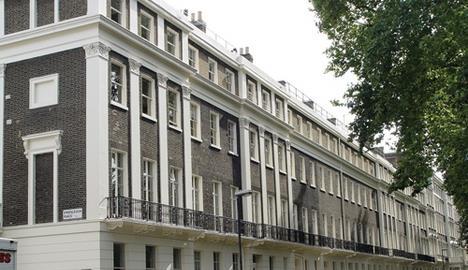Consulant Inbuilt offers a checklist to tackle wasted emissions from existing buildings
The perfect package of improvements to any building, residential or commercial, clearly depends on its age, design, use etc. But Inbuilt has the following advice for anyone who wants simple and cost effective ways to tackle wasted emissions:

1. Inclusion is mightier than innovation – Existing stock means there are tenants and occupants who must be closely consulted from the outset. No amount of imposed techno wizardry will create a sustainable future if the users feel it is imposed.
2. Look around you and join the carbon dots – There are great ways to link existing stock with local low and zero carbon new build developments, which can help make technologies like CHP viable. Local Strategic Partnerships and Regional Development Agencies must play a pivotal role to maximize co-ordination and blending of complementary energy requirements.
3. Keep your eyes on the horizon – Focusing too much on immediate measures such as Decent Homes and annual CERT targets can result in short-term fixes that actually reduce the viability of greater improvements at a later date. For example, installing gas condensing boilers during 2008 when a waste heat main is due to be available in 2010 could make later upgrades unlikely for the next 10–15 years.
4. Together we stand, divided we fall – True low carbon refurbishment will require both advanced fabric improvements and low / zero carbon technologies. The installation and commissioning of these systems can be disruptive so careful programming of works at street and estate level is key to both reduce capital costs and foster a community spirit of ‘short term pain for long term gain’.
No amount of imposed techno wizardry will create a sustainable future if the users feel it is imposed
5. Minimise to maximize – Whilst bolt-on renewable technologies maybe a public statement of eco credentials they should be seen as the final stage in any carbon reduction project. Improving the building fabric to reduce heat loss and air leakage is of primary importance to both minimize any fossil fuels used and maximize the financial case of any renewables installed.
6. There’s more to life than walls and boilers – The way in which a building’s immediate environment is treated can have significant energy implications. For example, returning parking areas back to greenery with permeable surfaces and generous cycle stores can provide the incentive for people to reduce car usage. Combine this with building energy monitoring systems that also relay real-time local public transport information and people’s carbon literacy will be increased.
7. Think beyond the immediate solution – Treating improvement techniques in isolation increases the danger of unwanted side effects. An example of this is using insulated dry lining in solid brick walled dwellings to reduce heat loss. The insulation will unfortunately also isolate the thermal mass of the wall, reducing its potential to help minimize summertime overheating if combined with effective shading and night time ventilation.
8. Remember older buildings are very different animals – Traditional construction techniques and materials rely on vapour permeability to absorb and control humidity levels. Insensitive positioning of modern high performance materials can inadvertently accelerate structural damage.
9. Money makes the world go round – Whether we like it or not, money drives our society. Without clear long term financial incentives such as tax rebates, zero interest loans and guaranteed future energy prices, improvement of the existing stock will be perceived by many as Government targeting the hard-pressed individual rather than the more wealthy industrial giants.
10. Who turned out the light? – Ultimately real world performance of buildings often differs greatly to modelled predications due to the way people act. Clear and unavoidable real-time information within the building on both carbon emissions and running costs is crucial to make people take action to reduce their consumption.




























No comments yet